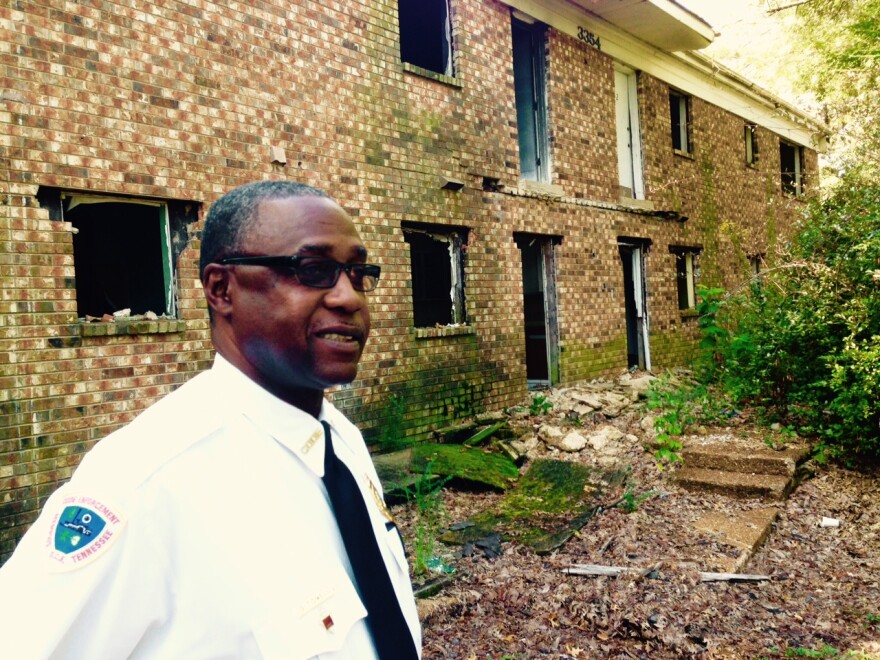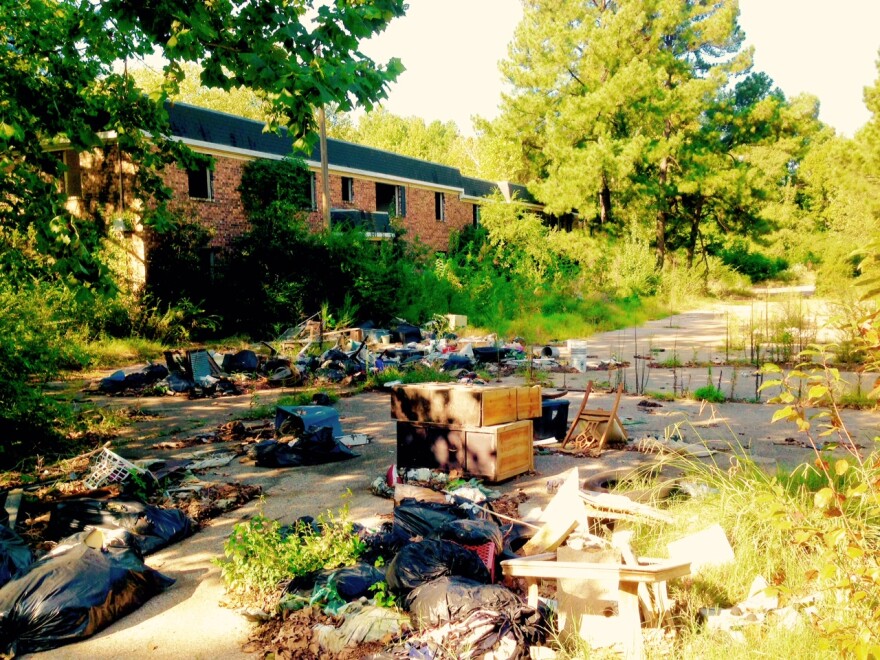Every Memphis neighborhood has a unique character, sometimes the result of hard work by residents, and sometimes from the hard work of code enforcement officers. On its surface, blight takes the form of an aesthetic problem. But it’s one that generates an enormous amount of work for local government.
For 19 years, Otis Tidwell has been one of those government officials. The manager of field operations for the City of Memphis’ code enforcement wanted to illustrate what his 47 field inspectors are up against.
In the Whitehaven area, he pointed out one blighted apartment complex after another. There were buildings that were missing windows, had holes in the roofs, were half-occupied and half-boarded up, and were dumping grounds for old tires.
One abandoned complex looked like ancient ruins teleported from the jungles of the Yucatan.
“Fire department won’t go in there if it catches fire,” Tidwell said. The reason? Open holes in the streets where thieves had stolen the rain grates.

Why doesn’t the city tear this huge property down? Tidwell says it would cost between two and three million dollars to do the job. Considering that the city’s annual budget for demolition is $6 million, removing this one complex would strain resources.
Tidwell points out that the complex is near an elementary school. He’s seen children playing in these buildings.
Blighted apartments represent on a larger scale what happens when building owners simply walk away from their properties.
“You make as much money as you possibly can and when it’s not viable to you anymore, you just walk away,” Tidwell says. “And you leave it for the citizens of Memphis to foot the bill.”
Tidwell says that many of these property owners live out of state, even out of the country, making it difficult for code enforcement to catch up with them, and for courts to penalize them.
And when property owners don’t address the problems, a long legal process follows.
Judge Larry Potter has spent 34 years on the bench of Shelby County’s environmental court. He says the court has “evolved immensely” in the last decade, taking a larger role in sorting out blight problems caused by property owners walking away or acting with negligence.
Potter says that in 2007, when banks started sending out foreclosure letters, many financially strapped people didn’t realize that those letters were not actual foreclosures.
“A lot of those people got up in the middle of the night and just left the house,” he said.
A few years later, code enforcement would come looking for them to deal with the blighted, abandoned property they had left behind assuming that the bank had reclaimed it.
“Unless there is an actual legal proceeding foreclosing the property, they may very well still own that property,” Potter says.
Nearly 10,000 abandoned properties in Memphis bear witness to the financial collapse.
Today, Potter tries to resolve ownership disputes between banks and borrowers fast enough to keep houses from becoming a nuisance, or creating more blight.
With new laws on the books and a number of laws being proposed, the process of locating owners, seizing derelict properties, and holding landlords accountable could soon accelerate Memphis' major blight fighting campaign.
And that’s why today’s blight problem, so different than the litter and graffiti of years past, is now as much about legal reform as it is about beautification.

However, some neighborhoods still rely on a more traditional form of "code enforcement": neighborly prodding.
The historic, African-American French Fort neighborhood near Downtown is tucked inside a highway on the edge of a large industrial area. It’s not easy to access, and its isolation has made it a tight-knit collection of about 250 lots.
The neighborhood looks like ideal suburbs from the 1950s and ‘60s, and given the residents' propensity to manicure the shrubbery into shapes, it’s hard to believe that one landscaping company doesn't take care of the whole place.
Neighborhood association president Lynn Keys says that block captains motivate people on their streets to keep up the standard of tidiness. The association routinely distributes flyers to residents reminding them of codes.
Violations are promptly reported to code enforcement.
Keys says that preventing blight and cultivating beauty – in any neighborhood -- requires one thing more than any other: “Working together.”



